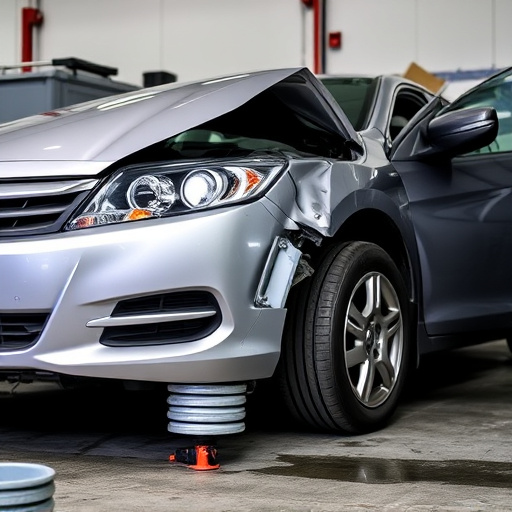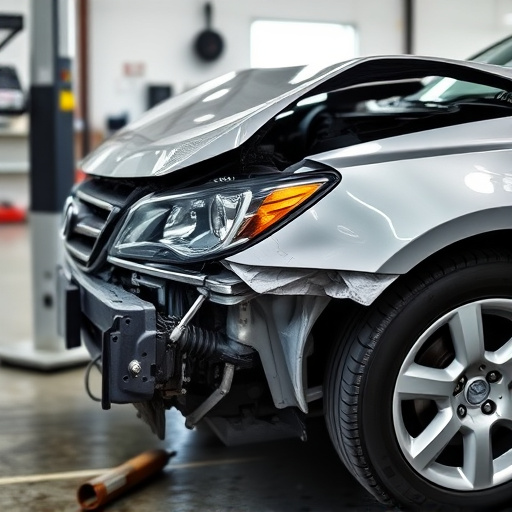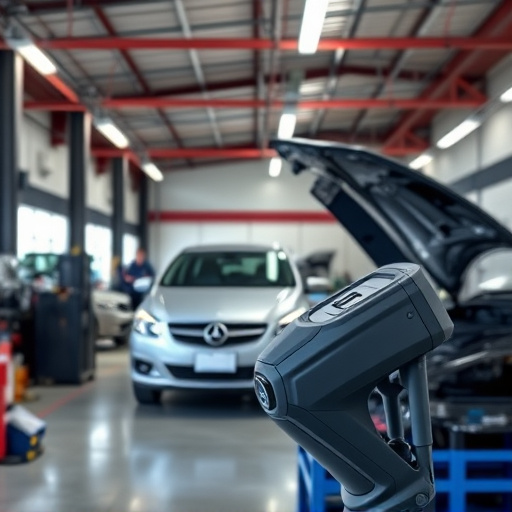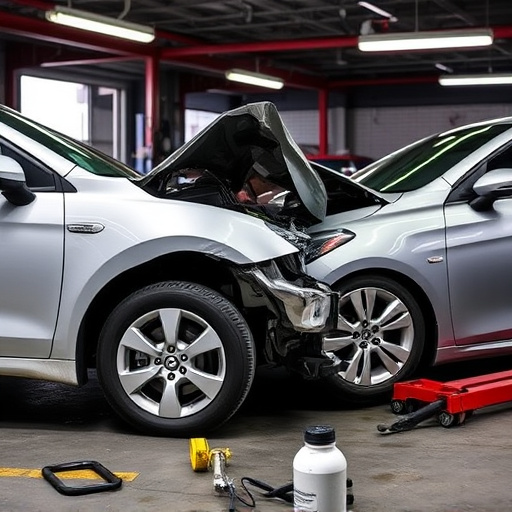Airbag module replacement is crucial for vehicle safety after severe collisions, requiring experts to reinstall and recalibrate intricate systems including inflators, fabric, and ECU, ensuring proper alignment, functionality, and coordination with other safety features while adhering to strict standards for optimal occupant protection.
Collision damage can significantly impact an vehicle’s airbags, highlighting the crucial need for understanding and addressing airbag module functionality. This article delves into the intricacies of how vehicular collisions affect these safety systems, focusing on key aspects such as assessment, replacement, and post-repair safety measures. Learn about the essential components involved in effective airbag module replacement, ensuring drivers’ protection remains a top priority following any accident.
- Understanding Airbag Module Damage Assessment
- Key Components for Airbag Module Replacement
- Ensuring Safe Operation After Airbag Repair
Understanding Airbag Module Damage Assessment

Airbag module damage assessment is a critical step in understanding how collisions impact safety features within vehicles. When a vehicle experiences a collision, the airbag module—a complex system designed to protect occupants—undergoes stress and strain. This can lead to various issues, from minor component malfunctions to complete failure of the entire module. Assessing this damage involves meticulous inspection, often with specialized tools, to determine if the airbag can be repaired or if a replacement is necessary.
Airbag module replacement is a common outcome in severe cases, as the high-force impact can render the original module unusable. Vehicle body repair experts play a vital role here, ensuring that not only is the airbag replaced but also that the surrounding vehicle body repair and car paint repair are executed to maintain structural integrity and aesthetic appeal. Body shop services specializing in such repairs must adhere to stringent safety standards to guarantee that the restored vehicle meets regulatory requirements for optimal occupant protection.
Key Components for Airbag Module Replacement

When considering airbag module replacement, understanding the key components involved is essential for effective and safe car body repair. These modules are complex systems that require precise engineering to ensure optimal performance during a collision. The primary parts include the inflator, which is responsible for deploying the airbag at high speeds; the bag itself, crafted from advanced materials designed to cushion impact; and the electronic control unit (ECU), which triggers the inflation process based on sensor data from the vehicle’s crash sensors.
An auto repair shop specializing in airbag module replacement must also take into account the integration of these components with other safety systems within the car, such as sensors, airbags, and the vehicle’s computer system. Proper alignment and functionality testing are crucial steps to ensure that the new airbag module seamlessly fits into the car, enhancing the overall safety features, just like a car dent removal expert would meticulously restore a vehicle’s exterior to its pre-damage condition.
Ensuring Safe Operation After Airbag Repair

After experiencing a collision, ensuring the safe operation of your vehicle’s airbag system is paramount. Even with minimal car dent removal or vehicle dent repair, an airbag module replacement might be necessary if the original unit has sustained significant collision damage. It’s crucial to have a qualified technician perform a thorough inspection as they can assess functional integrity and make informed decisions about repairs or replacements.
Proper airbag module replacement involves not just swapping out the damaged part but also recalibrating the system to guarantee optimal performance in future accidents. The process includes updating safety sensors, testing the entire system, and ensuring proper deployment coordination with other safety features like seatbelts. This meticulous approach is vital to maintain the safety standards that airbags were designed to provide, especially during high-impact events.
Collision damage can significantly impact the functionality of airbags, emphasizing the crucial need for proper assessment and safe repair. Understanding the key components involved in airbag module replacement is essential for ensuring optimal vehicle safety. By adhering to strict guidelines and seeking professional assistance for airbag repairs, drivers can rest assured that their vehicles are ready for the road, providing peace of mind and enhancing overall passenger protection. Remember, a well-executed airbag module replacement process is vital for maintaining the integrity and effectiveness of your car’s safety features.














